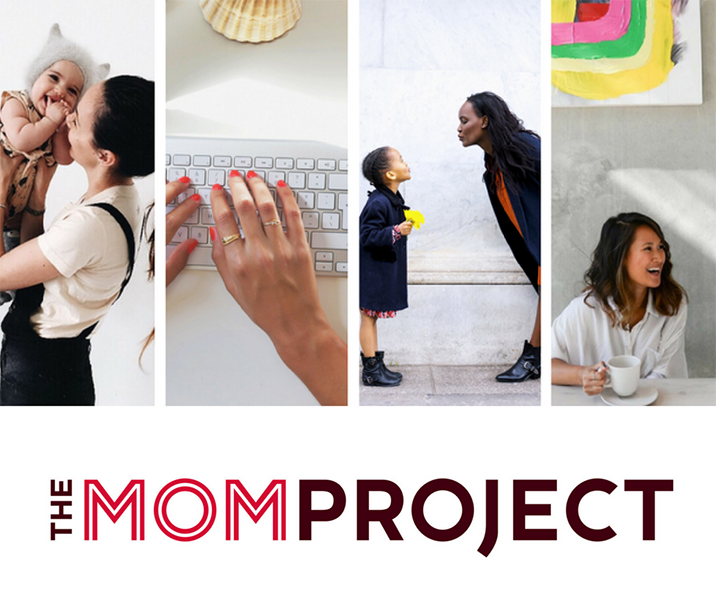Gregory Robinson’s Fundraising Journey For A Market That Helps Women Return To The Workforce (As told to Nathan Beckord)
It began with a stunning statistic.
After we had our first son, my wife Allison was on maternity leave from her role as a Proctor & Gamble executive. She was evaluating what going back to work would look like as a mother. She stumbled across a Harvard Business Review study that found that 43 percent of college-educated women who have children “off-ramp” from the workforce entirely.
That was the original insight that led Allison to found The Mom Project, a digital talent marketplace and community that connects talented women (and men) with world class employers that understand work/life balance.
We need to be more thoughtful about work and parenthood. We want to enable a continuous experience so moms (and dads) don’t have to take a step back or “opt out” if they take a break from their career for parenting.
The companies on our platform offer two key things: flexibility (through non-traditional schedules or work-from-home days, for example) and respect. You can bring up family in an interview and not feel prejudice. Your manager and the executive team support that you equally prioritize your family to your work.
We launched in April 2016 in Chicago. It’s been a busy three years. We have 100,000 women on our platform and over 1,000 employers, 50 of which are Fortune 1000 companies.
I’ve been at The Mom Project since the beginning, as the chief financial and operating officer. In our first year, even though I had more fundraising experience, I actively took a back seat. This is a mission-based business, and Allison is the face of it. There couldn’t be a better face and a better representative for this mission.
So far, we’ve raised two rounds of funding. We did our seed round at the beginning of 2018, totaling just over $2.5 million. In December of that year we announced our Series A, which brought in about $8 million. So we raised $11 million in total — all in the past 15 months.
Here’s how we did it.
1. Bootstrap through the ‘first-time founder wait’
We didn’t participate in an accelerator program. The first two years of the business, we ran quite lean. We had the ability to fund ourselves for a period of time.
When we came to market, the Chicago Tribune wrote a business page cover story about us. We signed with enterprise businesses within our first six months. We had traction. But business traction and ability to raise funds in your first year don’t necessarily correlate.
We originally planned to raise an angel round much earlier, but we encountered a few hurdles.
You can’t underestimate the “first-time founder wait,” especially for early investors who are really betting on a founder. There is an unquestionable difference between successfully running a business and the ability to grit through and grow one from nothing. It’s hard for investors to evaluate that.
A family business is an uncertainty for an early investor as well. They have a formula: how many risk factors can I control? They know startups are a grind. It’s going to be really hard before it’s good. Adding a family dynamic on top of that? People get squeamish about it.
There are so many examples of how family makes a startup stronger, though. A strong partnership and mutual trust is an advantage. I consider us to be in that latter camp. But couples starting a business together have to be pragmatic about these factors.
Another factor was that our product is people. We had decent technology but we weren’t investing millions in it. We’re a transformative marketplace focused on enterprise sales. Venture investors are predominantly technology investors.
It was hard for investors to quantify just one or two good contracts — $50,000 from an enterprise customer could quadruple our revenue in a year and make the growth chart look phenomenal. But that’s not all it’s going to take to succeed. So we had to prove out our product. It ended up taking a little bit more time than we anticipated.
2. Find investors who become customers
Some of our earliest commitments came from corporate-backed funds, rather than traditional tech funds. Engage Ventures in Atlanta is the first Fortune 1000-backed venture fund, with partners like Delta, Home Depot, AT&T and Georgia Pacific. They invest in innovative businesses, but they tend to pick companies they envision using.
Another investor was BBG Ventures in New York, a great seed fund run by Susan Lyne (founder of Premiere Magazine, former CEO of Martha Stewart Omnimedia and Gilt.com).
When we began to raise money in the Chicago ecosystem, we were lucky enough to get Irish Angels involved — Notre Dame’s alumni investment fund, run by some incredibly smart women.
3. Grow strategically and sustainably
From raise to raise, we grew about 350 percent. We were able to do it in a sustainable way, growing month over month rather than spiking revenues sporadically.
Investors care about liquidity, which is the balance of how many buyers and sellers you have. So we were thoughtful when driving new companies to the platform that they were based where lots of people are looking to work. At first, it was Chicago. After the seed, we were able to expand to Atlanta and San Francisco. Once we had three markets performing well, we were able to take the next step toward bigger investments.
The lead investors in our Series A round were Initialized Capital — founded by Garry Tan and Alexis Ohanian — and Grotech Ventures, a great shop based out of Washington, D.C. They’re a very disciplined, opportunistic firm that really liked the marketplace and we connected with them right away.
Allison pitched Alexis and Garry in person. (Save the finance guy for when the deal is basically done). Alexis is the spokesman for Unilever’s parental leave campaign. He embodies a new generation of parents.
4. Know your selling points
Staffing companies usually open physical offices to serve a market. But that model is dead, in my opinion. Going to a staffing office is just not how professionals engage with opportunities now. We reach out to them on Facebook and LinkedIn. We work through referrals. We were able to grow a marketplace just through digital and social media relatively quickly. It’s an advantage for us. We can evaluate opening markets or following major customers in an agile way.
Nowadays funds really care about what you’re solving. Is this a valuable convenience play, or is this something that can improve the world we live in? People who invest in marketplaces and HR tech understand how work is transforming. The gig economy is a major theme for a lot of funds. Plus, we live in a world that is more aware of the challenges around gender, ethnicity and disabilities. The general trend to try solving these problems played in our favor as well.
Many CEOs now make diversity pledges. Their businesses are working to meet giant targets like “gender parity by 2025.” That created a relationship of mutual benefit and helped us grow.
5. Understand investor dynamics
When you’re raising earlier, it’ll take longer. If it happens really quickly, be thankful but wary. Investors who lend money quickly might lock onto what I like to call a false consensus — something they think makes the business work, but maybe it’s not the bigger opportunity.
The biggest thing about raising money is not running out of time. Understanding your cash flow is so important.
I didn’t fully appreciate the difficulty of raising the first rounds. Angel and seed investors are looking for validation. They really get comfortable when a “super angel” writes a $100,000 check or makes an introduction.
It wasn’t until Eddie Lou, the founder of Shiftgig, another talent marketplace based in Chicago, joined our board and helped communicate what we were doing to the investment community, that we really started to take off.
If we could have gotten that kind of person in the mix earlier, things might have happened more quickly.
Next, know that growth is a thousand pivots. Our overall strategy hasn’t really changed since the day we started the business. But how we got there evolved as we learned along the way.
Initially, we thought The Mom Project would focus on the return to work audience: the 10 million educated women not currently participating in the workforce.
But then as we were running the business, we saw that more than two-thirds of users on our platform are currently in the workforce. So this isn’t just about bringing people back in, though it’s a critical piece of what we do. It’s really about solving larger [work-life balance] topics for a broader audience.
One last piece of advice: when working with your spouse, do not run the same parts of the business. Have clear lanes.
Nathan Beckord is the CEO of Foundersuite.com which makes software for raising capital. Foundersuite has helped entrepreneurs raise over $1.5 billion in seed and venture capital since 2016. This article is based on an episode of Foundersuite’s How I Raised It podcast, a behind-the-scenes look at how startup founders raise money.


